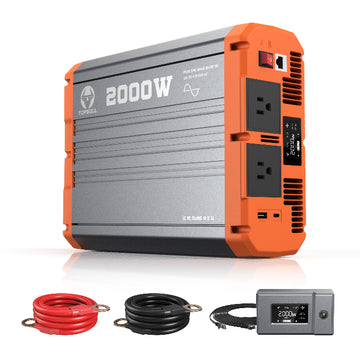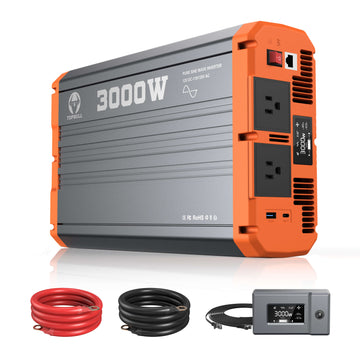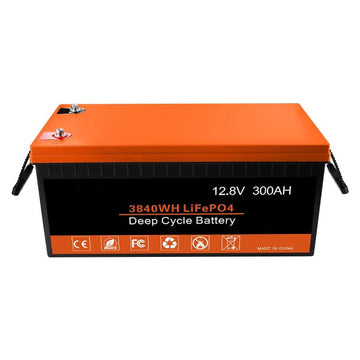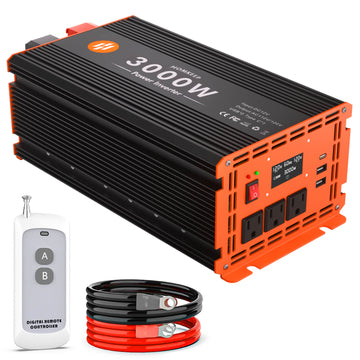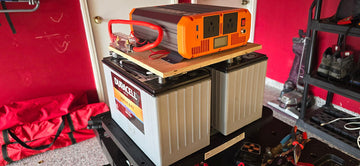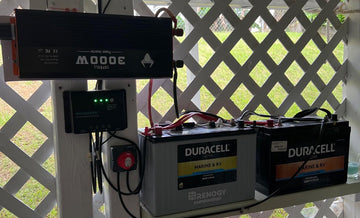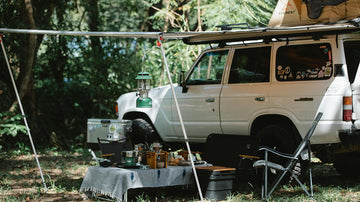Solar energy as clean energy is the focus of research in the field of new energy nowadays, and the inverter, as an important component in the solar energy system, plays a key role in the whole system. Converting the direct current (DC) generated by solar panels into alternating current (AC) for home use, there are two main types of home solar inverters:
Microinverters are mounted on each panel's back and are best suited to complex solar installations.
String inverters connect multiple panels in series to a central location and are best suited to simple installations.

What are solar microinverters?
Microinverters are smaller versions of traditional inverters (up to 1000 watts) mounted behind solar panels. The conventional way of inverting PV is to connect all the DC power generated by the PV cells in the sunlight in series and parallel, and then convert the DC power to AC power through an inverter for connection to the grid. The microinverter converts the DC power to AC power directly from the back of each solar panel.
In a solar panel system using microinverters, each solar panel is equipped with its microinverter, which effectively means that each module has its own MPPT. The number of microinverters you need to install depends on the number of solar panels in the system. The microinverters are connected in parallel and then send the collective AC power to your home and the grid.
Advantages of installing microinverters
Microinverters offer a variety of advantages for solar systems:
Improved performance in shaded areas: Microinverters excel in areas with variable shading. Because each solar panel has its microinverter, if one module fails, gets covered in dust, or encounters different light conditions, the output of the entire system is not affected. This design ensures that your solar array maintains a high energy yield, making microinverters an ideal solution for properties where shading is an issue.
Monitor every panel: With a microinverter, you can effectively monitor the performance of individual panels. This feature makes it easier to isolate faults and resolve problems, resulting in optimal performance and more efficient maintenance.
Safer operation: The microinverter converts DC to AC power at the panel, and the conversion is almost instantaneous, so no high-voltage DC is flowing through the roof. If you need to shut down your solar system for any reason, the microinverter can shut down the system directly from the panels themselves. This feature makes your solar installation safer and reduces the risk of electrical fires in residential and commercial environments.
Easy expansion: If you want to expand your solar installation, microinverters make it easy. Microinverters offer a modular solution that allows seamless expansion of existing solar installations. If you decide to expand your solar system in the future, integrating additional panels with their corresponding microinverters is a simple process. In contrast, string inverter-based systems may require you to increase the capacity of the string inverters, adding complexity and potential cost.
Longer lifespan: Many microinverters typically have a lifespan of around 25 years, compared to 10-12 years for string inverters. An extended warranty also provides long-term peace of mind and ensures a strong return on investment over the lifetime of the system.
Design flexibility: Microinverters are particularly suited to roofs with complex shapes and orientations. Their independent operation allows customized solar arrays to maximize the use of sunlight and optimize power generation. Solar panels of different brands and wattages can also be installed side by side without affecting system performance.
Potential drawbacks of microinverters
Initial cost: While microinverters offer many benefits, it is important to note that microinverters tend to have a higher cost per watt than string inverters. This can be an obstacle for those on a tight budget.
Installation complexity: Installing a microinverter is slightly more complicated as each panel requires its panel. This can make the installation process longer and result in higher labor costs compared to a simpler string inverter installation.
Maintenance and repair: Microinverters are mounted on the roof and connected to each panel, so finding and fixing problems can take more time. Imagine the solar installer having to re-enter your roof and remove the module to replace the unit. Not only is this more difficult to access, it also costs more.
It is worth noting, however, that these problems can be offset by long-term benefits. In the long run, increased energy output, better safety features, and lower maintenance costs can compensate for the higher initial price. In addition, the ability to closely monitor each panel means that problems can be identified and resolved more quickly, which can reduce subsequent maintenance issues.
What are string inverters?
Which are connected to form an array. These solar panels generate DC power as a whole, and the DC power from these combinations is fed into a single inverter. A string inverter is a self-contained unit, usually installed inside your home near the electricity meter.
The key role of a string inverter goes beyond simple conversion; it can also increase the energy output of the connected panels. The size of the string inverter required for your system depends on the output of each panel and the number of solar panels you want to install. If you need to install larger solar panels in your home, you can install several string inverters that communicate in parallel.
However, string inverters have a common limitation: their output depends on the least efficient panel in the array. This means that even if one solar panel is shaded or not working properly, the whole array will produce less power.
Advantages of string inverters
String inverters have some great advantages, especially for certain types of solar projects:
Cost savings: Because string inverters can handle the conversion of multiple solar panels, thereby reducing the hardware required for the system, string inverters are often the most cost-effective solution. In particular, string inverters are around 30% cheaper than microinverters, making them a good choice for larger projects where cost reduction is key. String inverters also require less labor to install than other types of inverters.
Fewer connections: One of the main advantages of string inverters is that only one connection is usually required to efficiently convert DC to AC power. String inverters are easy to troubleshoot, making it easier to get a solar system up and running again. Because string inverters have fewer connections, maintenance, troubleshooting, and installation time are reduced. There is also less potential for system wiring errors, making it easier to troubleshoot.
More variety: Due to their traditional characteristics, many well-known and reputable brands manufacture string inverters compared to microinverters.
Monitoring: String inverters are usually equipped with a monitoring system that allows the user to track the performance of each string of solar panels. This is a great way for users to keep track of their energy production and consumption, which helps to identify and solve problems.
Disadvantages of string inverters
String inverters have significant disadvantages, especially under certain conditions:
Shading problem: Your biggest problem is dealing with shaded areas. If only one panel in the array is shaded, the performance of the entire string will drop to the level of the least efficient panel unless a power optimizer is added. This makes them less suitable for partially shaded roofs, as even small shadows can significantly reduce energy output.
Expansion is difficult: Adding more panels to a string inverter system is not easy. Unlike microinverter systems, where panels can be added easily, expanding a string system may require new inverters or reconfiguring the existing setup, which is both expensive and complicated.
Shorter lifespan: String inverters typically have a lifespan of around 10 years, which is shorter than the 20-25 year lifespan of microinverters. This means you may face additional replacement costs and, over time, interruptions in power generation.
High DC voltage safety concerns: These inverters operate at high DC voltage levels, which increases the safety risk during system failure or installation. Higher voltages can lead to arc faults, a serious fire hazard.
Limited monitoring capabilities: String inverters make it difficult to monitor the performance of individual panels because they consolidate power. Without additional monitoring tools, it can be difficult to find and fix problems with specific panels.
Risk of system failure: If a string inverter fails, the entire system stops generating power, resulting in a significant loss of energy until the problem is resolved. This is in contrast to microinverter systems, where a problem with a microinverter system will only affect one panel.
Need for additional equipment: Compliance with safety standards such as the Rapid Shutdown Rule may require additional string system components, adding to the cost and complexity of a solar project.

